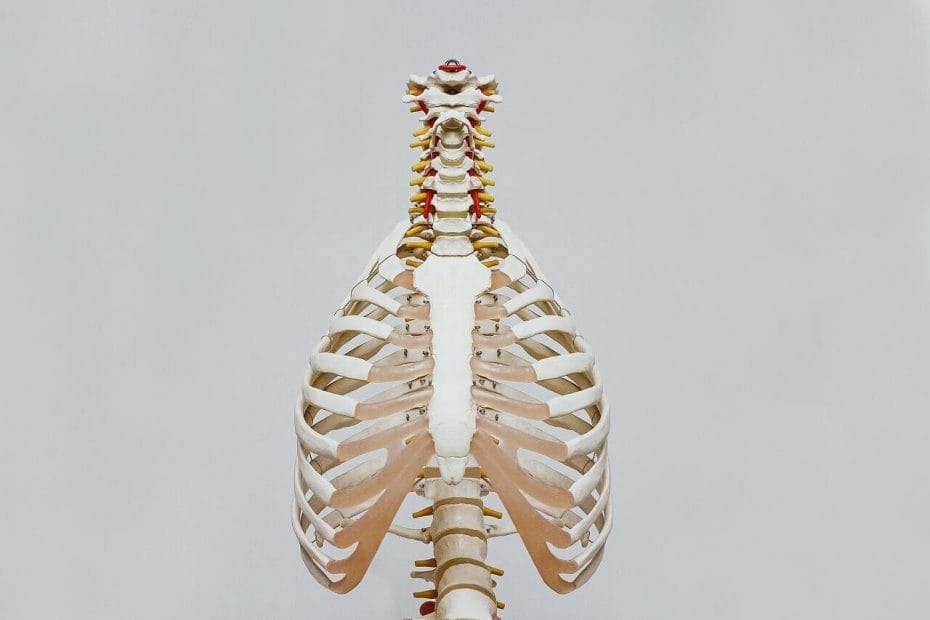Female genital mutilation is a barbaric procedure that involves the full or partial removal of the external female Genitalia. This horrible practice is said to have affected over 200 million girls all over the world, with about three million girls under the risk of undergoing that procedure every single year. The kind of procedure undertaken varies from community to community and ethnic group to ethnic group and so far the practice of Female Genital Mutilation has been documented in about thirty countries mostly in Africa, Middle East and Asia. This horrible practice, however, is not only particular to these countries, but there are also few ethnic groups in South America that are guilty of this practice and now due to the issue of migration, some girls are still in the danger of undergoing this terrible act in Europe, America and other western countries.
You may ask yourself, why is such a barbaric act practised and why is it still in practice in the year 2020 and the answer boils down to the obsession and the need to control the female body. There are a variety of reasons why people believe this act should persist, but whether it is to ‘preserve the virginity of the girl child’ or ‘increase the sexual pleasure of men‘ or ‘grow the size of the penis’ or ‘enhance fertility‘ or just because the vagina is viewed as ‘ugly and dirty‘ or ‘religious reasons’ it all boils down to one thing and that is gender inequality and the need to control a woman’s body.
This practice is strongly linked to child marriages and in most societies that practice that, the life of the girl child is seen as less and there is usually a high rate of gender inequality in all aspects of their lives.
No matter which angle we chose to view this terrible act, nothing justifies it. It is a gross human right violation and injustice that shouldn’t even have been practised at all. It is not just dehumanizing; it causes a lot of health challenges, both mental and physical for the victims. No one should be subjected to Female Genital Mutilation.
Is female genital mutilation a religious problem?
People have linked the practice of Female Genital Mutilation to religions especially Islam. For a long time and in so many communities, people have used Islam to justify it but there is no evidence that it is true and no backing from the Qur’an or other Islamic texts to justify this barbaric act, but due to misguided religious leaders and blind following, some people refuse to believe otherwise even with evidence presented to them.
Other religious communities such as Christianity and Judaism as well as traditional religions also are guilty of this practice but there is nothing in those religions that justifies or support it. In fact, this practice is said to predate Islam and Christianity as there had been evidence of female genital mutilation in Egyptian mummies. Herodotus, a historian, claimed that in the 5th century BC, the Ethiopians, Phoenicians and Hittites practised circumcision.
Geographic distribution of female genital mutilation (Source: University of Virginia, School of Medicine)
Can female genital mutilation be done in a less harmful way or ‘safe’ manner?
Contrary to misconceptions, there is no safe way to do this act and there is no justification for it. There was a time when communities in the United States and Western Europe adopted this act as a means of treating certain issues such as sexual and mental disorders but that is not a cure, in fact, no matter how this act is done, it will always be detrimental to the health of women all over the world.
It is proven that even in cases where female genital mutilation is done by medical practitioners in the name of ‘medicalised FGM’ there are usually severe health consequences attached to it and it doesn’t matter if there is an ‘expert’ in these communities who is trained to carry out this act, there are always issues involve such as the use of crude objects without antiseptics and anaesthesia to help with the pain.
When we sell the idea that there is a right or safe way to do female Genital Mutilation, whether by medical practitioners or otherwise, we are making it difficult to stop this act and people will keep finding reasons to justify it.
The consequences of female genital mutilation
One important thing you need to understand about female genital mutilation is its societal importance and cultural significance to the societies that practice it. This is why it is so hard to stop it. Many people feel ashamed of the fact that girls in their families have not been cut and in trying to run away from his taboo, they end of harming those poor little girls.
Female Genital Mutilations have so many terrible effects and some of them include:
– Mortality rate: Some cases of FGM ended in the death of the victim. The death cases caused by this act is underreported; however, it is believed that one in every 500 cases of FGM results in the death of the victim.
– Anxiety and shame: Female Genital Mutilation doesn’t just end after it, so many victims end up feeling ashamed and anxious about the disfiguration of their bodies caused by this act.
– Post traumatic stress disorder and depression: The problem with traumatic events is they tend to stay with us for a very long time and cause us problems in the future. Female Genital mutilation is a traumatic experience that causes mental health issues to its victims in the future.
– Complications during labour: There are certain complications that arise for victims during labour such as prolonged labour, low birth weight, obstructed labour etc. and this leads to a higher rate of maternal mortality.
– Psychological and psychosexual disorders: In Lagos, a study was conducted which analyzed the psychological aspects of Female Genital Mutilation and they found out that Female Genital Mutilation impacts the sexual and personal lives of its victims.
– Infections: Due to the process of Female genital Mutilation, it is common for victims to contact infections such as urinary tract infections, haemorrhaging, excessive pain, staphylococcus infections, Human Immunodeficiency Virus (HIV), Herpes Simplex Virus (HSV) etc.
Looking at the above, the implications of this act on both the mental and physical health of the victims cannot justify the practice. There is nothing good that comes out of it; all it does is cause long and short-term health conditions and force young girls to live in shame.
Check out this research article on the devastating effects of female genital mutilation published in Alexandria Journal of Medicine.
Types of female genital mutilation
The World Health Organization (WHO) has divided the practice of Female Genital Mutilation into four types, which are:
– Clitoridectomy: This is also known as Type I and it is the full or partial removal of the clitoris or prepuce. This is one of the most prevalent types of Female Genital Mutilation.
– Excision: This is also known as Type II and it is the full or partial removal of the labia minora and the clitoris. This type is also widespread in many communities.
– Infibulation: This is also known as Type III and the procedure involves narrowing the vaginal orifice with some sort of a covering seal which is formed by repositioning the labia majora or labia manora after cutting it from its usual position, after which the victim of this terrible act will be cut open again on the first night of marriage or when she is about to give birth. However, this procedure is not prevalent in many communities; in fact, it is believed that only about 10% per cent of women experience this.
– Others: Other procedures that do not fall under type I, II, III are divided under Type IV, and this typically involves a range of other methods such as scraping , piercing, cauterization, incising etc.
Source: University of Virginia, School of Medicine
Female genital mutilation in Nigeria
Female Genital Mutilation is very common in developing countries, and it is practised in about 28 countries in Africa and Nigeria has the highest number of victims in the whole world. The desire to hold on to tradition and cultures as well as ignorance is a big reason this act is still being practised in the country despite attempts to end it. Nigeria along with other countries sponsored a resolution at the 46th World Health Assembly to put an end to this practice in all nations, but that alongside other laws such as the Federal Law banning FGM Assigned in 2015 by President Good luck Ebele Jonathan was not strong enough to stop the practice in the country.
It is said that about twenty million women in Nigeria have undergone Female Genital Mutilation and about 63.3% of women and 62.1% of men in the country believe that it should be discontinued; however cultural factors are holding the country back.
FGM has the highest number of prevalence in the South South which covers about 77% cases of FGM in Nigeria, then the Southeast which covers about 68% per cent of cases, then the Southwest which covers 65% of cases in the country. The practice of FGM is not common in the North and is practised on a smaller scale though can be extreme in some cases. Among six major tribes in Nigeria which are Hausa, Yoruba, Ibo, Kanuri, Ijaw and Fulani, only Fulanis are said not to practice FGM in any way or form.
Though the Violence Against Persons ( Prohibition) Act (VAPP Act) which was the first law to prohibit Female Genital Mutilation came into force in 2015, a lot of states have failed to domesticate this Act, which is probably one of the reasons why FGM is still being practised in so many parts of the country.
What is being done to stop this act?
All over the world, people are doing what they can to stop this act from organizations to human rights activists and feminist. In Kenya, Kakenya Ntaiya, an activists, feminist and educator was able to save many girls from FGM in her community by building a school for girls allowing parents to enrol their daughters only under the condition that they will not subject them to female Genital Mutilations.
In Nigeria, organizations such as World Health Organization (WHO), Federation of International Obstetrics and Gynecology (FIGO), United Nations International Children Emergency Fund (UNICEF), Economic Commission for Africa ( ECA), women organizations, Arewa me too (who organized a three hours standstill rally in 2019 to get states to domesticate the VAPP Act), so many individuals and feminist are lending their voices to end this practice.
Below is the percentage of girls and women aged 15 to 49 who have heard about FGM/C and think the practice should end.
Source: UNICEF global databases, 2020, based on DHS, MICS and other national surveys, 2004-2018
There is still a lot of work to be done. Laws passed need to be taken seriously and communities need reorientation on this act and its effects, and more people need to speak up in order to achieve this. Lend your voice to this cause. SAY NO TO FEMALE GENITAL MUTILATION.
Some references
Ibrahim, M. and Mahmoud, H. (2016) Effect of female genital mutilation on female sexual function, Alexandria, Egypt. Alexandria Journal Medicine, 52 (1), P 55 – 59. Retrieved on 21 February 2020 https://sciencedirect.com/science/article/pii/S2090506815000238
Llamas, J. (2017) Female Circumcision: The History, the Current Prevalence and the Approach to a Patient. Retrieved from the web on 21 February 2020 https://med.virginia.edu/family-medicine/wp-content/uploads/sites/285/2017/01/Llamas-Paper.pdf
Unicef (2020) Female genital mutilation (FGM). Retrieved from the web on 21 February, 2020 https://data.unicef.org/topic/child-protection/female-genital-mutilation/
Default photo credit: Daily Kos





